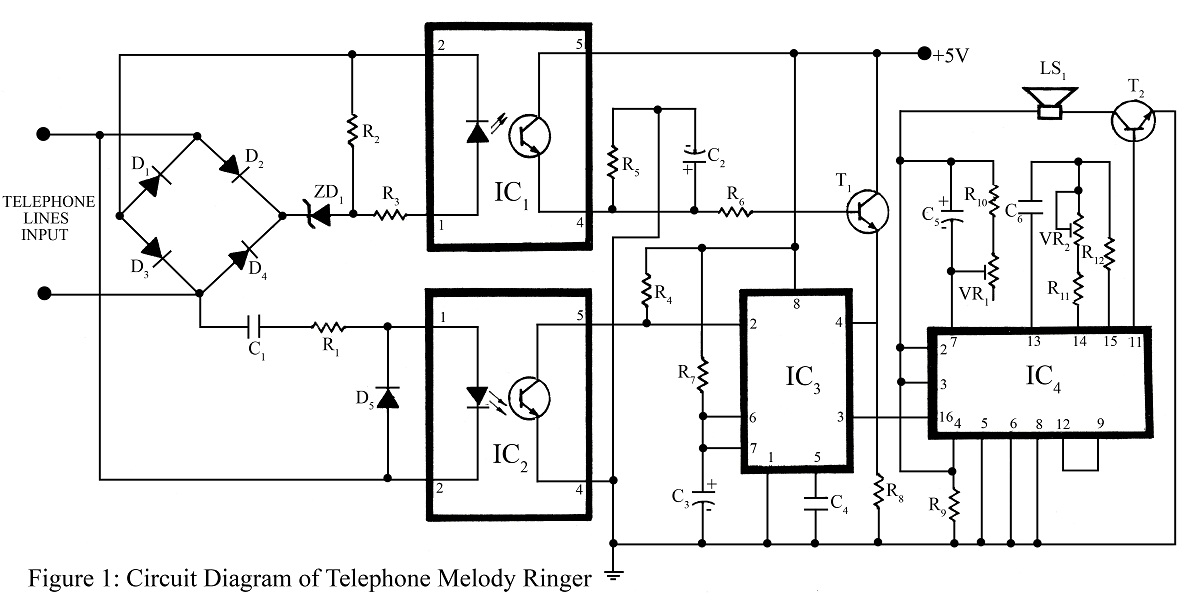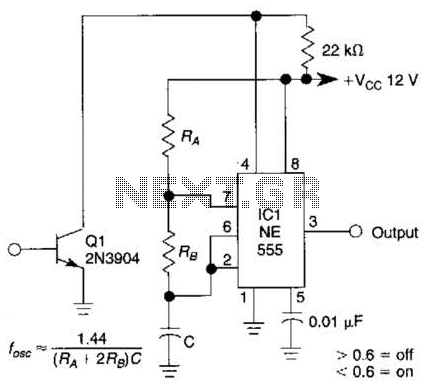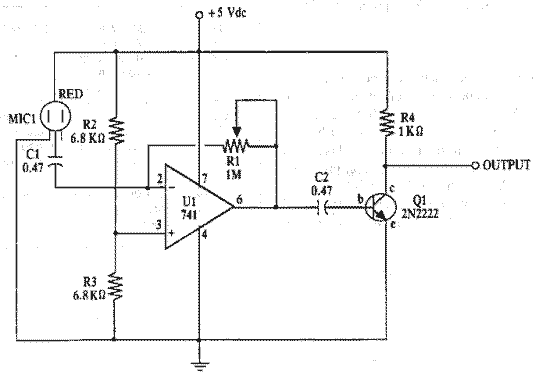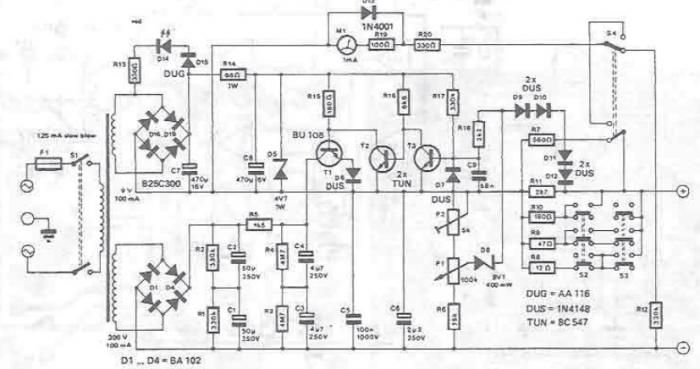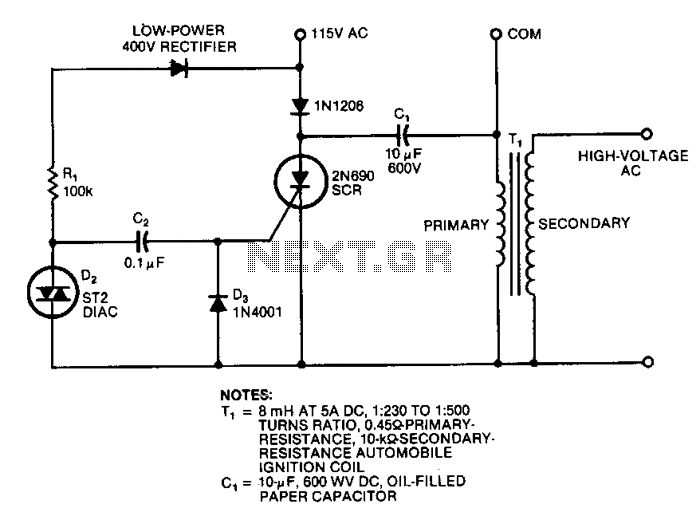
Inverting Power Supply Circuit
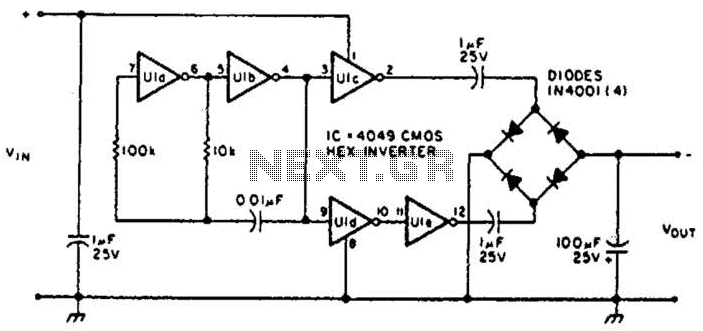
This circuit will provide a negative DC voltage that is approximately equal to the positive input voltage at no load and about 3 V less at a 10 mA load. The input voltage range is from +5 to +15 V DC. It is important not to exceed 15 V to prevent potential damage to the circuit.
The circuit in question is designed to generate a negative DC voltage output from a positive DC voltage input. The operation is based on the principle of voltage inversion, typically achieved through the use of an operational amplifier (op-amp) in an inverting configuration or through specialized voltage inverter circuits.
At no load conditions, the output voltage closely mirrors the magnitude of the input voltage, providing a user-friendly interface for applications requiring a negative voltage reference. However, as the load increases, specifically at a 10 mA load, the output voltage decreases by approximately 3 V. This drop in voltage is an important consideration for applications that require stable output under varying load conditions.
The input voltage range is specified between +5 V and +15 V DC, which sets the operational limits for the circuit. It is crucial to adhere to this voltage range to avoid damaging sensitive components within the circuit, particularly the operational amplifier or any voltage regulator used. Exceeding the maximum input voltage of 15 V could lead to catastrophic failure, hence the need for protective measures such as voltage clamping or current limiting.
In practical implementations, additional components such as capacitors may be included to stabilize the output voltage and filter any noise present in the input signal. Diodes can also be utilized to prevent reverse voltage conditions that could damage the circuit. Proper thermal management should be considered, especially when the circuit operates near its maximum ratings, to ensure longevity and reliability.
Overall, this circuit serves a critical role in applications requiring a negative voltage supply, with careful attention to input limits and load conditions to ensure optimal performance and prevent damage. This circuit will provide a negative dc voltage that is approximately equal to the positive input voltage at no load and about 3 V less at 10 mA load. -`~ is from +5 to +15 Vdc. Do not exceed 15 V or Ul might be damaged.
The circuit in question is designed to generate a negative DC voltage output from a positive DC voltage input. The operation is based on the principle of voltage inversion, typically achieved through the use of an operational amplifier (op-amp) in an inverting configuration or through specialized voltage inverter circuits.
At no load conditions, the output voltage closely mirrors the magnitude of the input voltage, providing a user-friendly interface for applications requiring a negative voltage reference. However, as the load increases, specifically at a 10 mA load, the output voltage decreases by approximately 3 V. This drop in voltage is an important consideration for applications that require stable output under varying load conditions.
The input voltage range is specified between +5 V and +15 V DC, which sets the operational limits for the circuit. It is crucial to adhere to this voltage range to avoid damaging sensitive components within the circuit, particularly the operational amplifier or any voltage regulator used. Exceeding the maximum input voltage of 15 V could lead to catastrophic failure, hence the need for protective measures such as voltage clamping or current limiting.
In practical implementations, additional components such as capacitors may be included to stabilize the output voltage and filter any noise present in the input signal. Diodes can also be utilized to prevent reverse voltage conditions that could damage the circuit. Proper thermal management should be considered, especially when the circuit operates near its maximum ratings, to ensure longevity and reliability.
Overall, this circuit serves a critical role in applications requiring a negative voltage supply, with careful attention to input limits and load conditions to ensure optimal performance and prevent damage. This circuit will provide a negative dc voltage that is approximately equal to the positive input voltage at no load and about 3 V less at 10 mA load. -`~ is from +5 to +15 Vdc. Do not exceed 15 V or Ul might be damaged.
